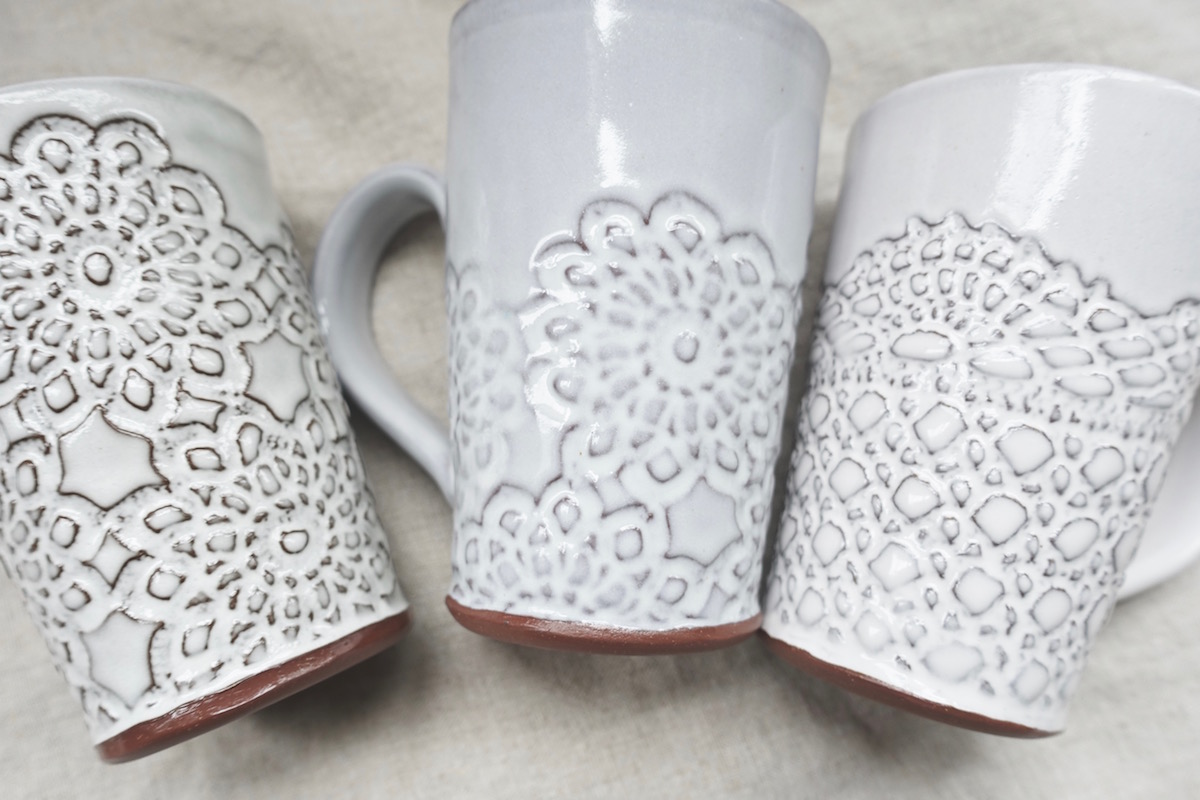The right amount of opacity highlights the incised design
The mug on the left is a commercial brushing glaze. The mechanism of this effect is that the glaze is much thinner on the edges of the design, thin enough that its opacity is mostly lost. The potter is attempting to mix her own equivalent (center and right). Her glaze adds 4% insight-live.com/material/1642">tin oxide to a transparent. However, as you can see, she has added too much. Further testing using lower percentages will find the right balance between the opacity needed to cover the brown body on the flat areas and the transparency needed to expose it on the contours.
Pages that reference this post in the Digitalfire Reference Library:

This post is one of thousands found in the Digitalfire Reference Database. Most are part of a timeline maintained by Tony Hansen. You can search that timeline on the home page of digitalfire.com.
